
Taking the High Way, As Opposed To The Highway

Blog 46 by Mick: Taking the High Way, As Opposed To The Highway

OMG!!!! A MAP!!! yep, we are getting better at this blog thing. Here is our route through Ethiopia. Brown is gravel/offroad, green is tar and pink is a car. this post goes from Yabello down the south to Harar in the east, a bit over 1500kms
Our cheap little room afforded us a pretty uncomfortable nights sleep; the room was little bigger than the bed itself and the bed was pretty small to start with. And ventilation wasn’t high on the architect’s priorities when the hotel was designed either. We went out to try and get some food and failed, although we did get some Ethiopian coffee and sweet tea for 2 birr, about 10USc, per cup. Leftovers from last night’s dinner of crackers would have to do for breakfast…

Outside the tyre repair joint in Jabello sometimes also spelled Javello. Check the kid on the left. Hooters shirts are surprisingly common in Africa, probably donated by all the angry wife’s after their husband’s drunken night out on the town. I highly doubt this kid knew what he was wearing but hilariously he has got the posture right – hand down pants.

Tyreguy cleaned up all the surfaces, patch and tube alike, with a little grinding stone on a small pneumatic dremel type thing, it worked really well. Once cleaned he was careful not to touch the surfaces and used proper vulcanising glue on both patch and tube. Waited until tacky (about five minutes), then applied patch and bashed enthusiastically with a rubber mallet.
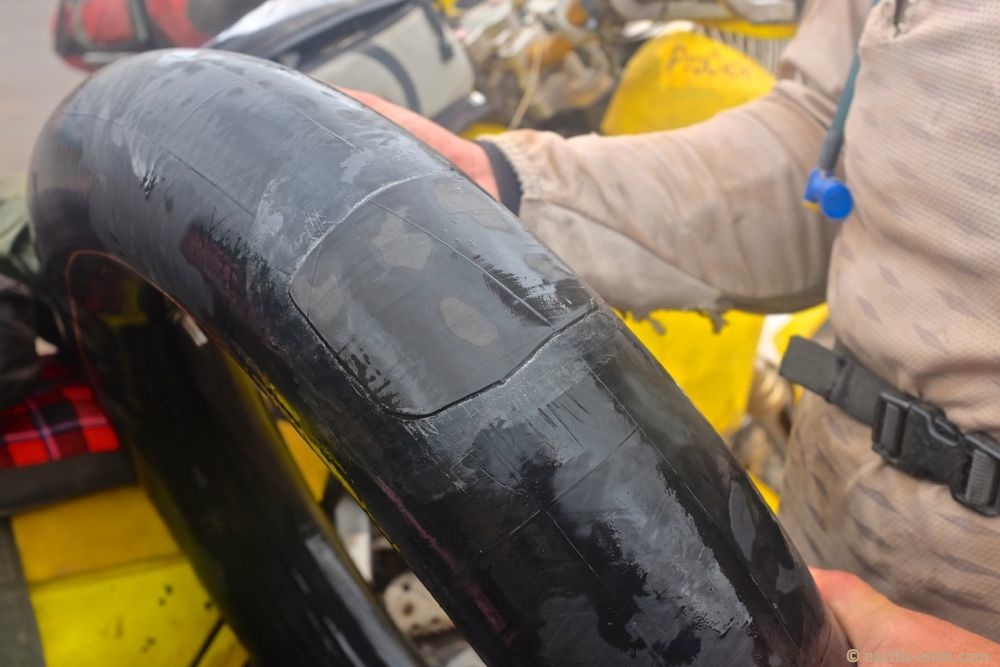
One of the patches after testing. He did a good job, and these patches have been used since and held no problem. Much better than the crap I had bought in Botswana to replace what I brought from Australia.
With yesterday’s flat tyre, we needed to sort either a new tube or at least some new patches, preferably both. We were directed out to the highway where we grabbed some fuel after lining up for about 20 minutes. Petrol shortages in Ethiopia are widespread, meaning that when a fuel station gets a petrol delivery, every petrol vehicle within range lines up and fills every vessel they have. We waited behind probably 8 tuk-tuks who filled their tanks and then two to three 20 litre jerry cans each. Patience was required, especially when they pushed in line and then wouldn’t look you in the eye when you knocked on their window…
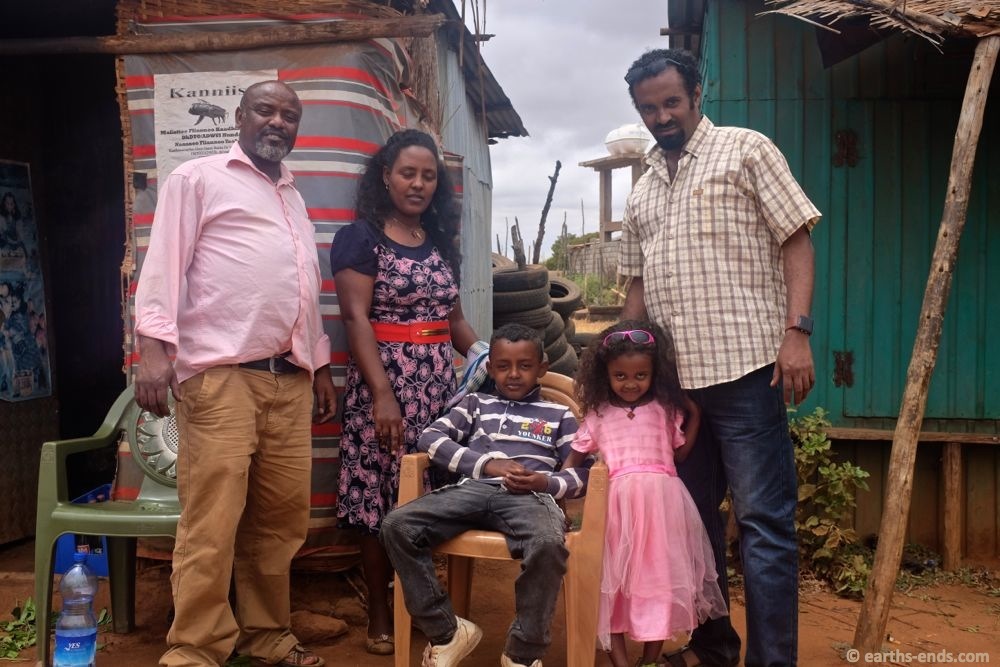
We ran into the Ethiopian family we met twice the day before again. They needed a patch put on a flat for their old 60 series Landcruiser. Import duties are so high (130% on top of purchase price) that old cars are looked after and are highly valuable.

Their little girl.
We quickly found a tyre repair guy on the edge of town. He was busy with plenty of jobs, generally a good sign, and he was pleasingly fastidious when he got to repairing our tube. While he didn’t have proper patches, using pieces of old tube instead, his preparation was methodical. He charged us the same as everyone else, a very reasonable 30birr (~1.50USD) per patch, and did such a good job I had him remove a crappy Chinese patch from another tube and got it repatched as well.
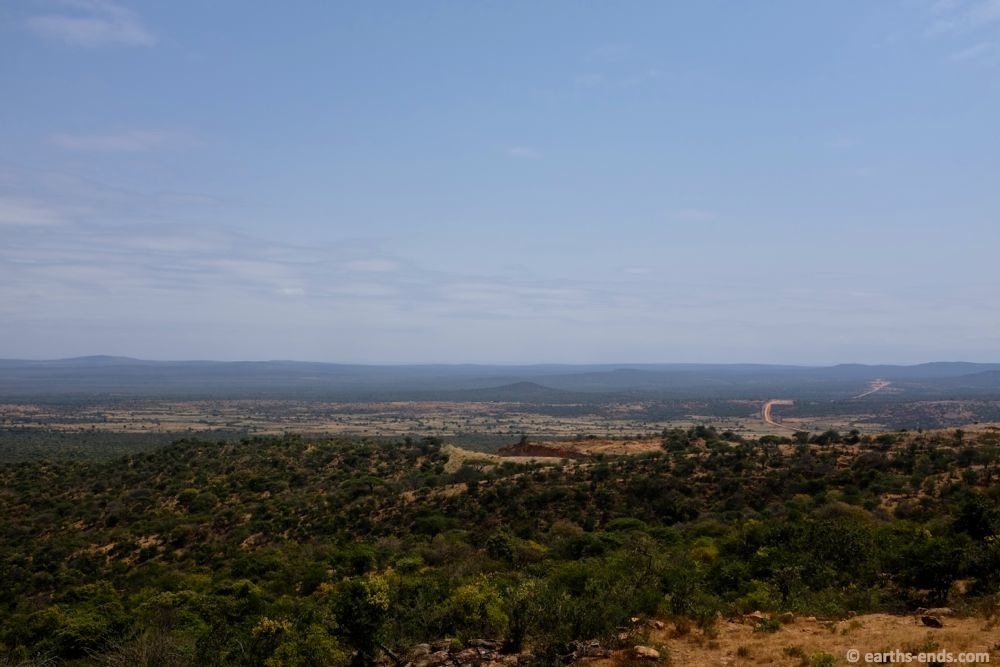
Views of the riding for the day east of Javello.
Not far from the edge of town we were on good gravel heading east. We had no gps maps or tracks for where we were going and were following a list of town names for a route that came highly recommended by our biker mate Caleb. First town of Herero was about 85km away where we stopped for lunch. We had no idea what anything was called so just used the internationally recognised sign language for food and waited to see what we got. We were swamped by locals staring at us until the restaurant owner grew frustrated and chased them away with a shepherding stick, but they settled and reformed about 10m away, safely out of stick swinging range, and stared at us from there instead.

The riding near Herero. After a late start waiting for fuel and sorting tubes, we did get very far until stopping for lunch.
We got some bung directions as we finished lunch and 25km later we ended up in a dead end village, literally and I’d guess probably figuratively too. On our return to Herero, we were directed onto another road heading south-east when the town we were aiming for, Negele Boreno, was northeast. Confusion abounded… we persisted nevertheless. We descended a mountain pass (about 500m according to the gps) and it was obvious we had changed region. Sandy plains replaced fertile mountains, brown replaced green, and population density dropped noticeably.
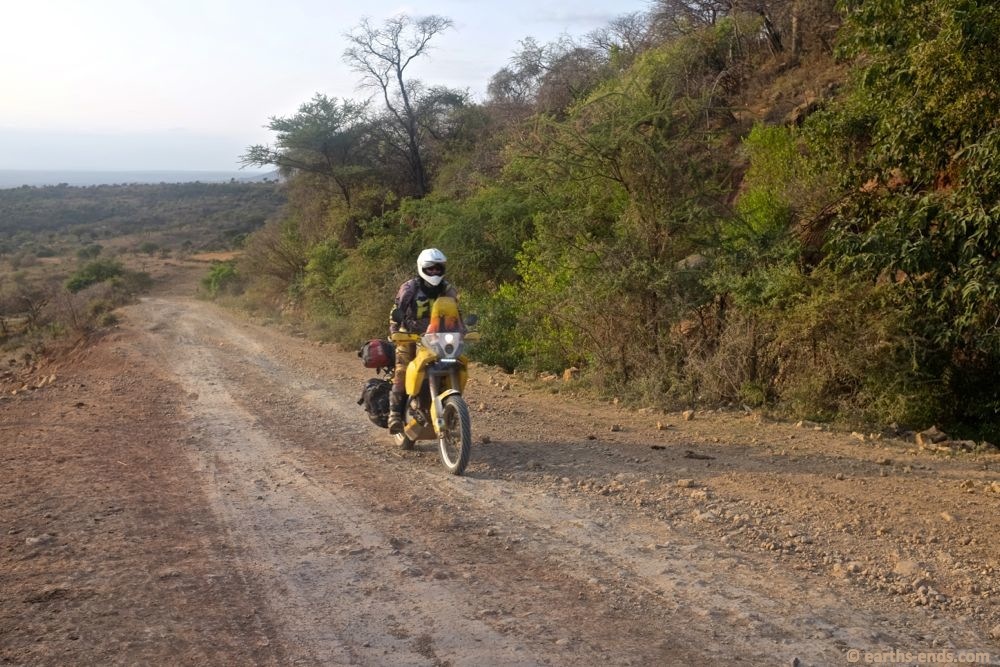
Pushing on towards Negele Boreno
As we entered the next major town, we came to a police checkpoint. The policemen waved at us to ‘wait there’ while he ran inside a neighbouring building, a big officious looking thing surrounded by many pristine Toyota Landcruisers. 5 minutes later a well dressed and well spoken guy came out and asked where we were going.
“Negele Boreno tonight, then over Bale Mountain tomorrow”
“Do you have a permit?”
“ahhh no…. do we need a permit?”
“Why of course, this is Somali Province. Because of Al Shabaab you need a permit to travel”
“ooooh…”
Without knowing, we had entered the Somali Province of southeastern Ethiopia, a hotbed for political unrest and gateway to Al Shabaab, hence the checkpoint. Whoops… Thankfully the guy, I don’t even now if he was police or what, was reasonable, and after chatting for a while I think it was obvious to him we were silly tourists and he let us on our way without the permit, after assuring him that we were heading north and not further east towards Somalia. Heading that way was about the last bloody thing I wanted to do so I was very happy to promise him this.

Some nice views and riding north of Negele Boreno
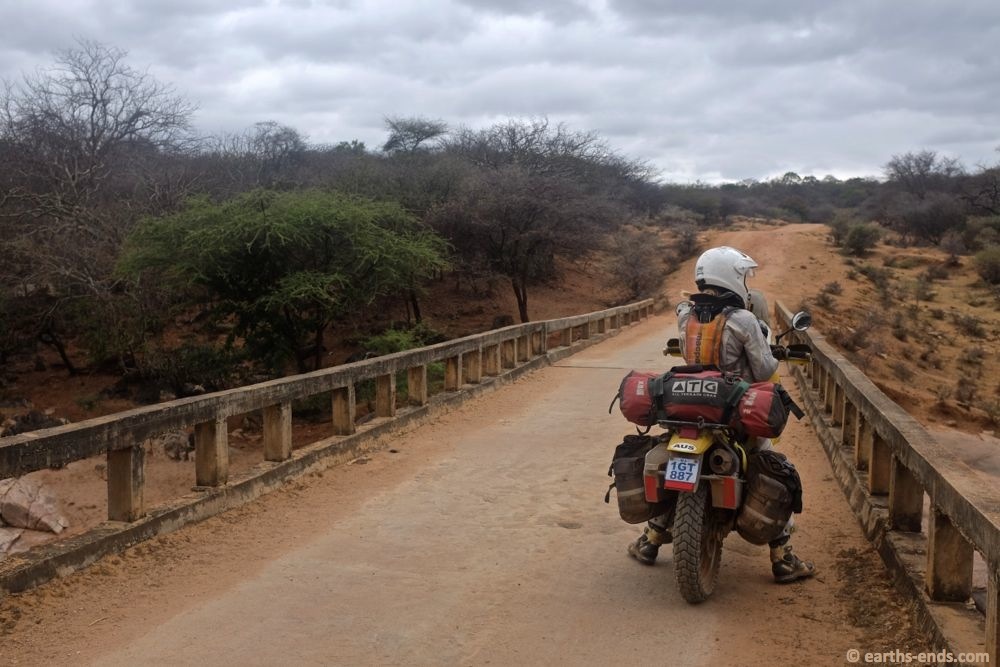
Some of the scrubby brown landscapes of the Somali Province of southeastern Ethiopia.
About 30 minutes before sundown we arrived in Negele Boreno and found a decent looking hotel for 150 birr. But after we had brought all our stuff inside and gotten changed, the price jumped to 200 birr. Cheeky buggers. We tried just giving them 150 but they were insistent so we coughed up the extra 50 birr (USD2.50), and then took our dinner business elsewhere. We were both fatigued and the idea of just chilling in the hotel restaurant with a cold drink was glorious, but after being shafted we found somewhere else. We did the same for breakfast.
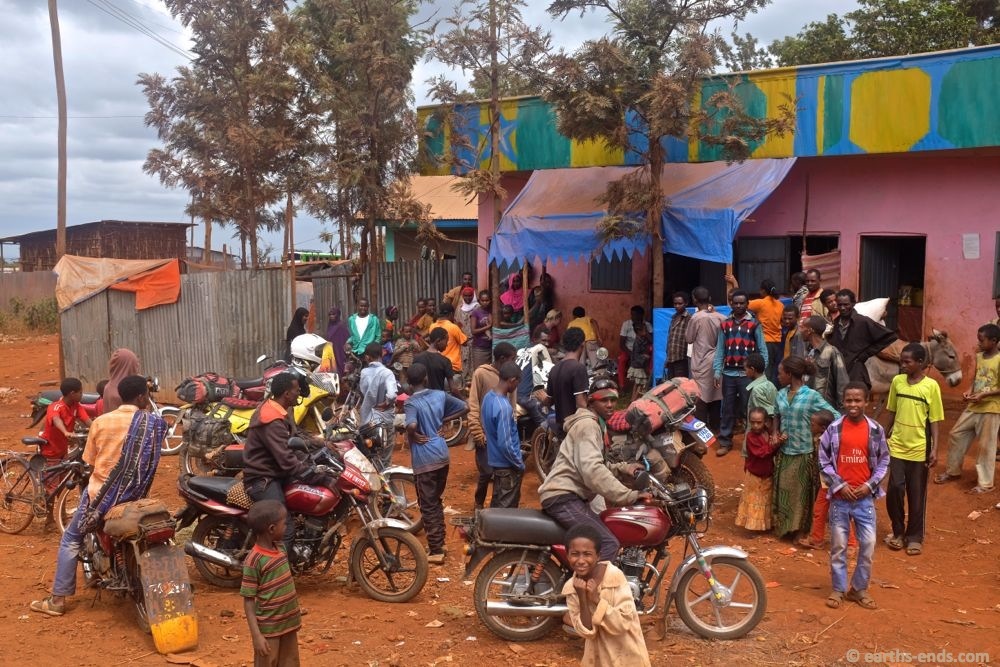
Our lunch stop before riding up Bale Mountain. Naturally, half the town came to look at us. Luckily we chose a small town so there wasn’t too many people.
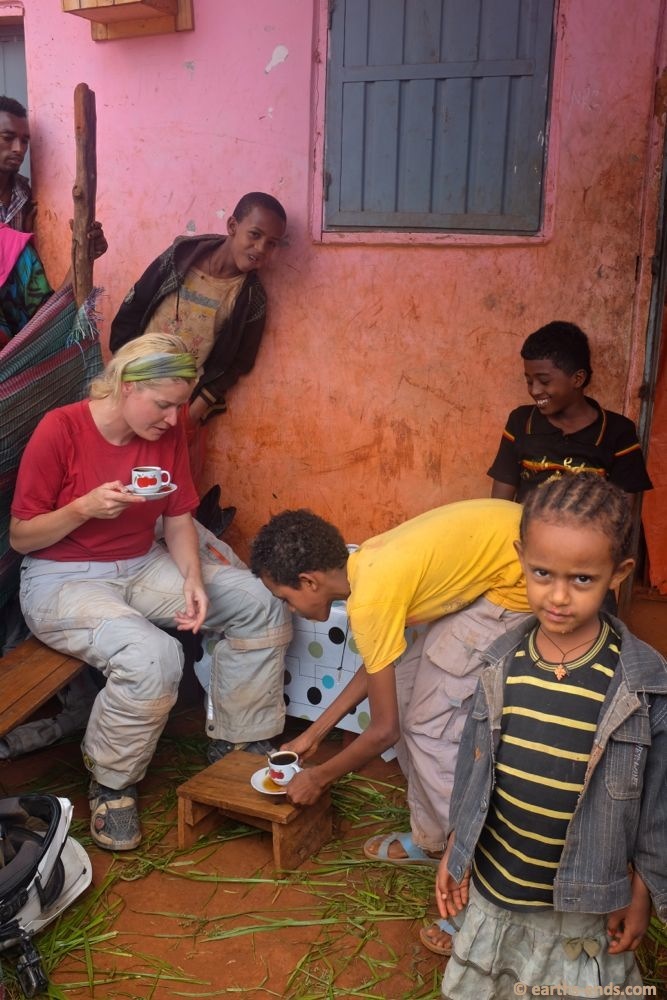
Coffee! It’s not just an institution like in the west, it is part of their history and ingrained in their culture. Coffee is native to Ethiopia, specifically the Harar region, and as be drunk for millennia.
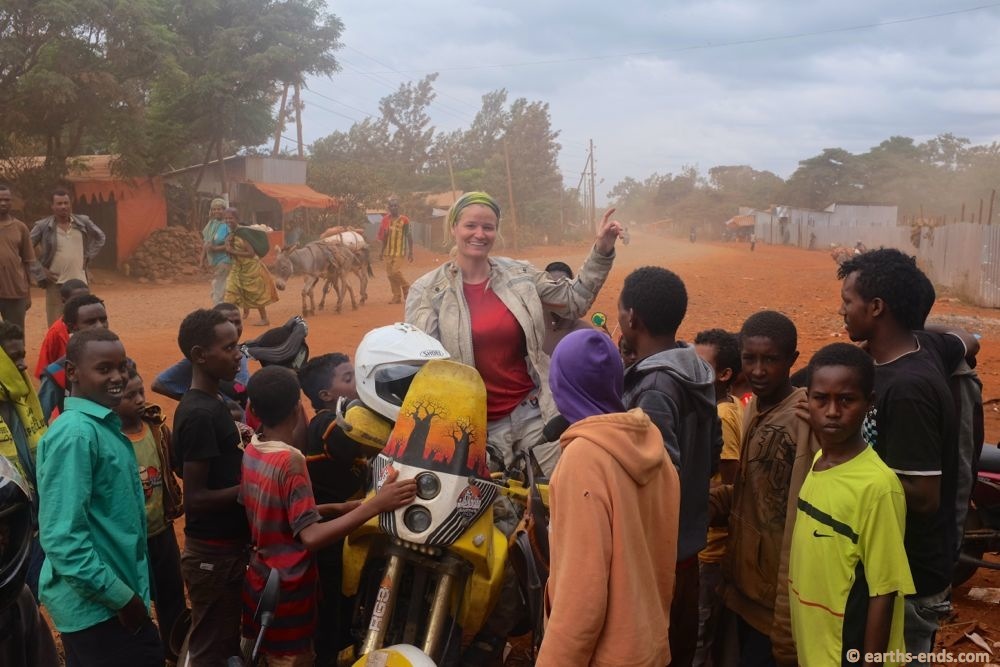
Leaving town.
Negele Boreno was a big enough town that we were able to get some cash and fuel before heading off north on some nice winding gravel roads. It was picturesque but slow riding as it almost always is in Ethiopia, we were only averaging about 45kph. Lunch was coffee and peanuts on the side of the road, and not long after we were ascending sharply into lush jungle. It was a steep ascent up Bale Mountain, and after riding in fog and mist and scenery of the Lord of the Rings variety, we pierced through the cloud into blue skies and sunshine.
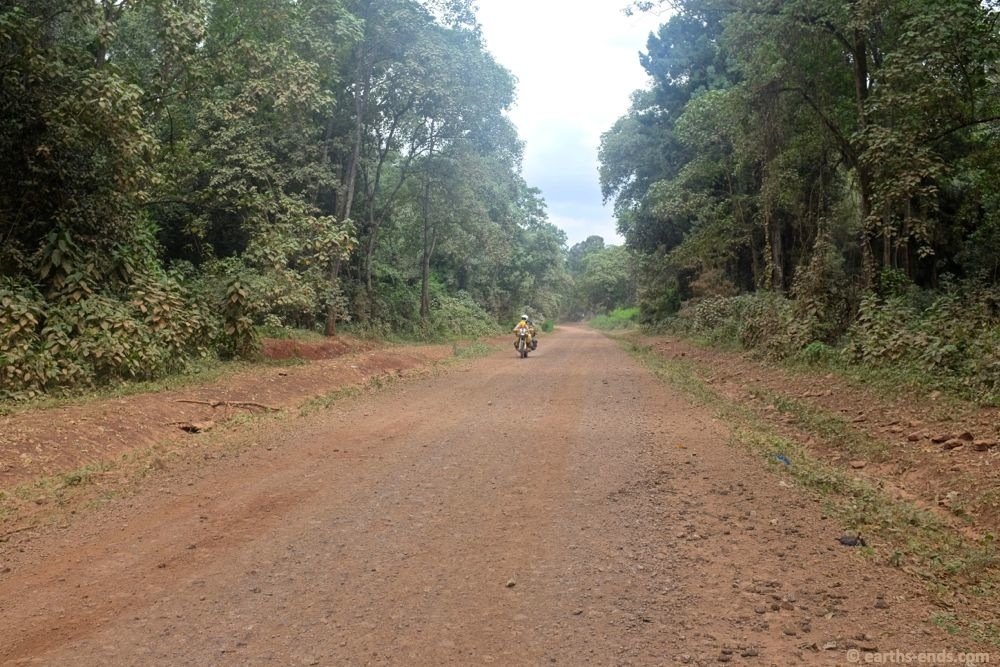
Ascending into jungle
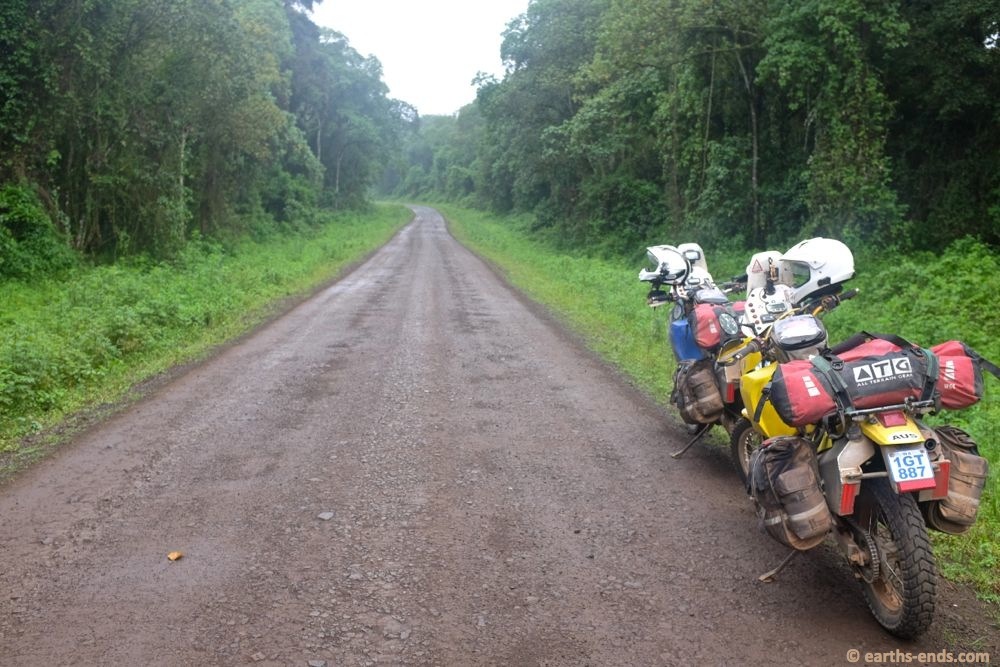
And then we stopped for wets. It was starting to rain off and on and was cold.

Some of the foggy riding on the way up.

Tan showing off her very ugly, but very effective over gloves. We had just poked our head through the fog and were greeted with this.
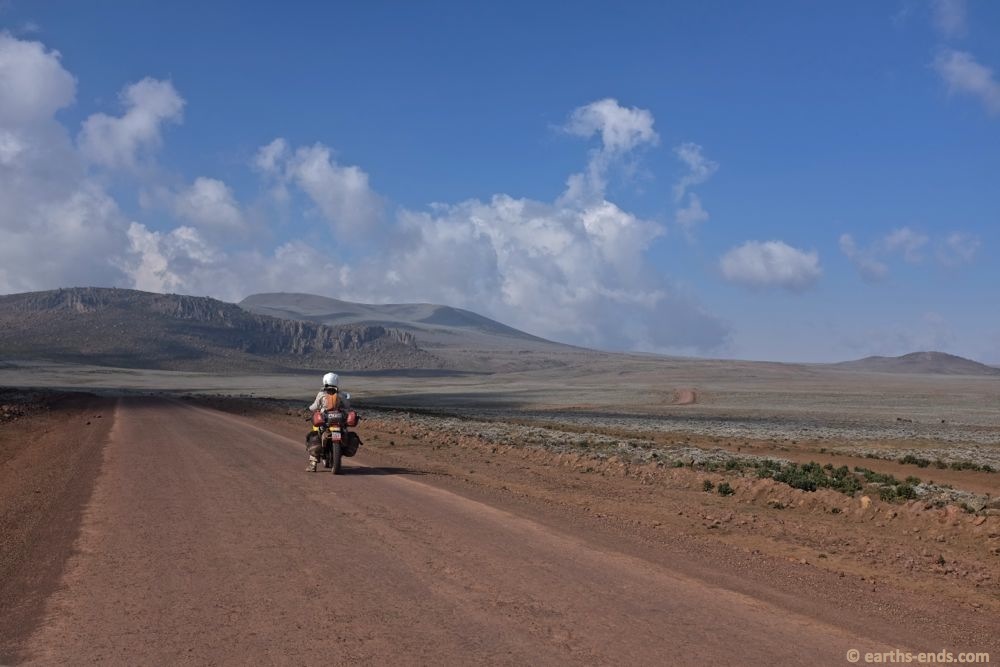
The road over Bale Mountain. Highly recommend this ride – surreal scenery.
We were above 4000m altitude on one of the highest roads in Africa, and the poor DR’s were struggling in the thin air. The mountain had a definite alpine feel about it, no trees, plenty of grass and it was quite cold even with the sunshine. We descended down the other side and found a descent hotel, complete with toilet seat (always a variable in Ethiopia) and guessed at some things on the menu for dinner.

There is a road to the summit, named Tullu Deemtu, and at 4377m it is the highest navigable road in Africa. The bikes were not happy at over 4000, they didn’t want to idle and coughed and spluttered when revved, so I wasn’t keen on the idea of riding up a few hundred metres more.

Great views. Was pretty cold though, somewhere around 8 to 10 deg C I’d guess.
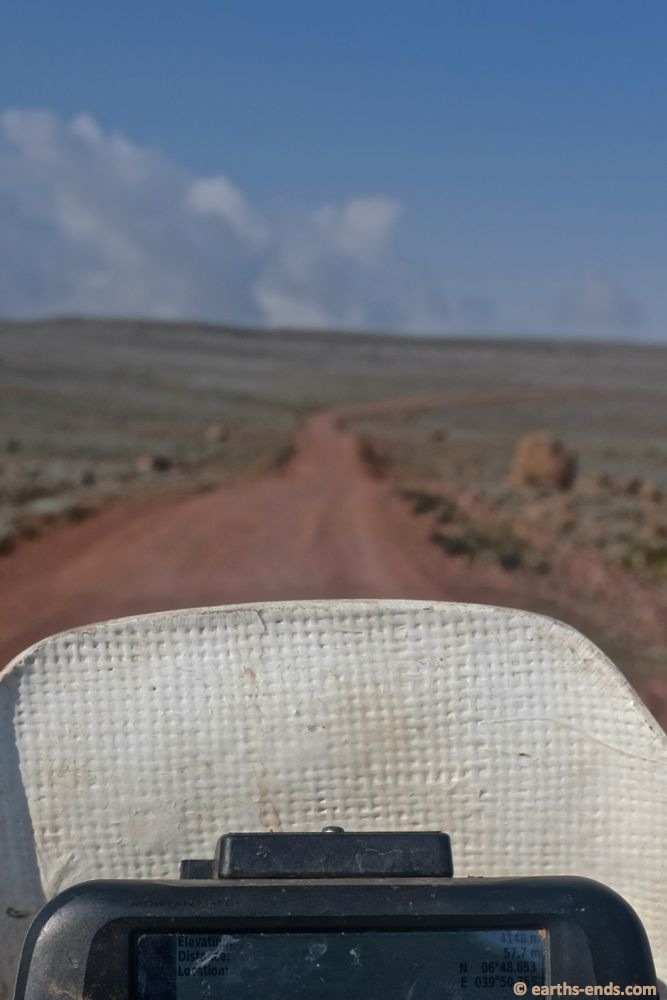
“Taking the high road”. If you look closely, the GPS is showing 4148m elevation. This was about the highest we went, maybe a few metres more but this was about the max.
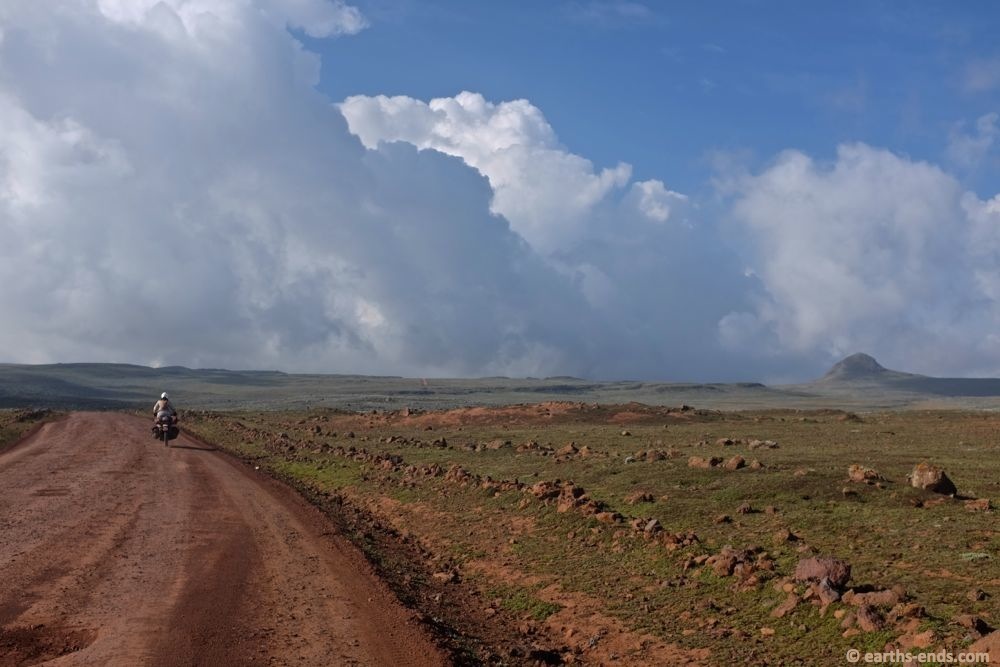
Enjoying the alpine feel.
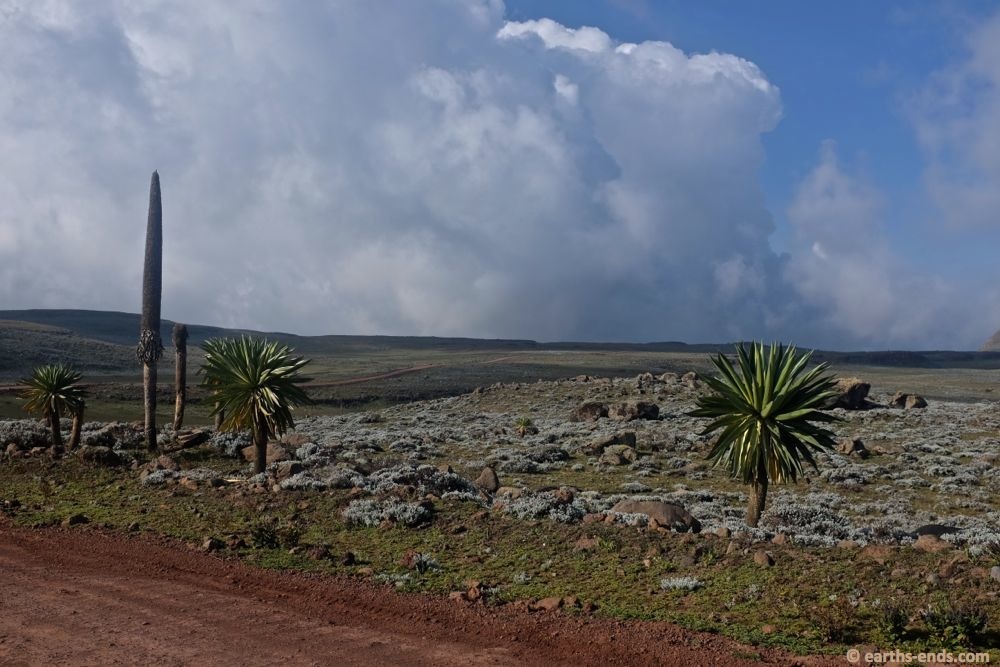
Definitely unique flora up here.
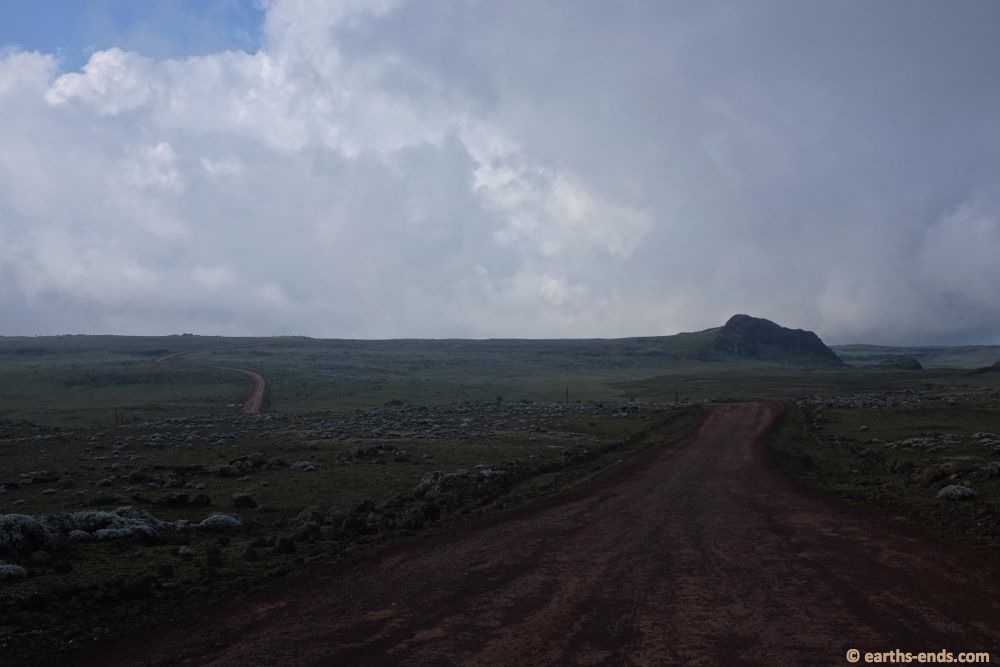
More views of the open road. We didn’t see anyone.
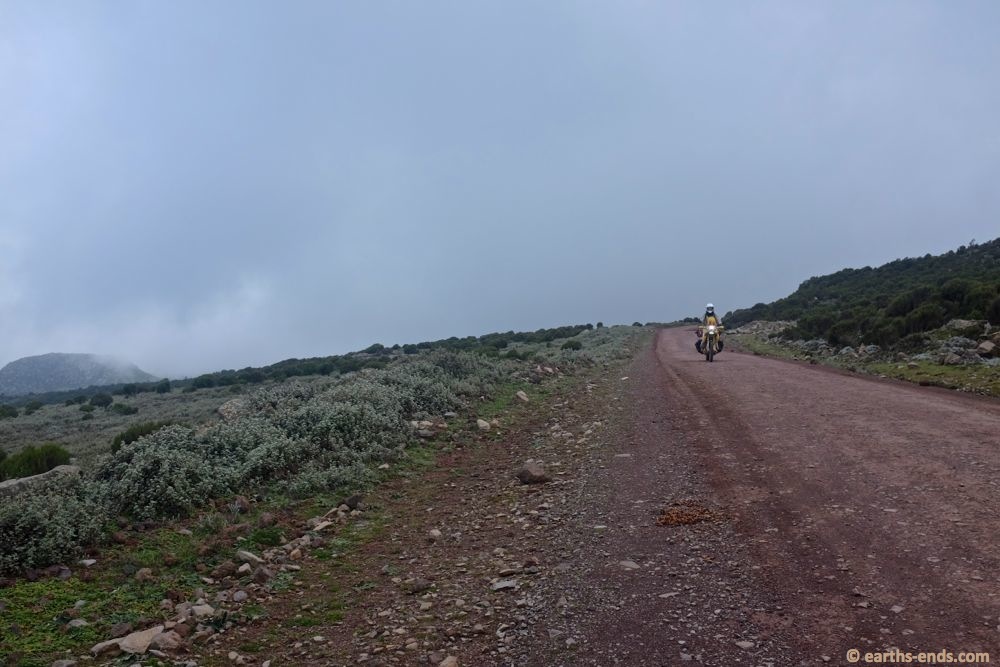
The descent down the other side.

Panorama of the northern side of Bale as we descended towards the towns of Goba and Robe.
It was a late start the next morning, after a couple days of riding we needed a chilled out breakfast with plenty of tea, which was then followed by the obligatory 30 minute wait in line at the fuel station. We were following some rough directions so made our way east to Goma and then north to the town of Ginir where we should have been able to find a road north to the Islamic holy town of Sheik Hussein. The directions were rough though, and after some real nice winding gravel where Tan hit a cow (ok it was just a calf, and a very small one at that, and it was just a very slow nudge – everyone was fine), we reached Ginir where we got turned around and sent east. We were told the turnoff we needed was 5km away, so we stopped often to confirm and it seemed we were on the right track. 35km later we found the turnoff. Directions aren’t a strong point here that’s for sure.
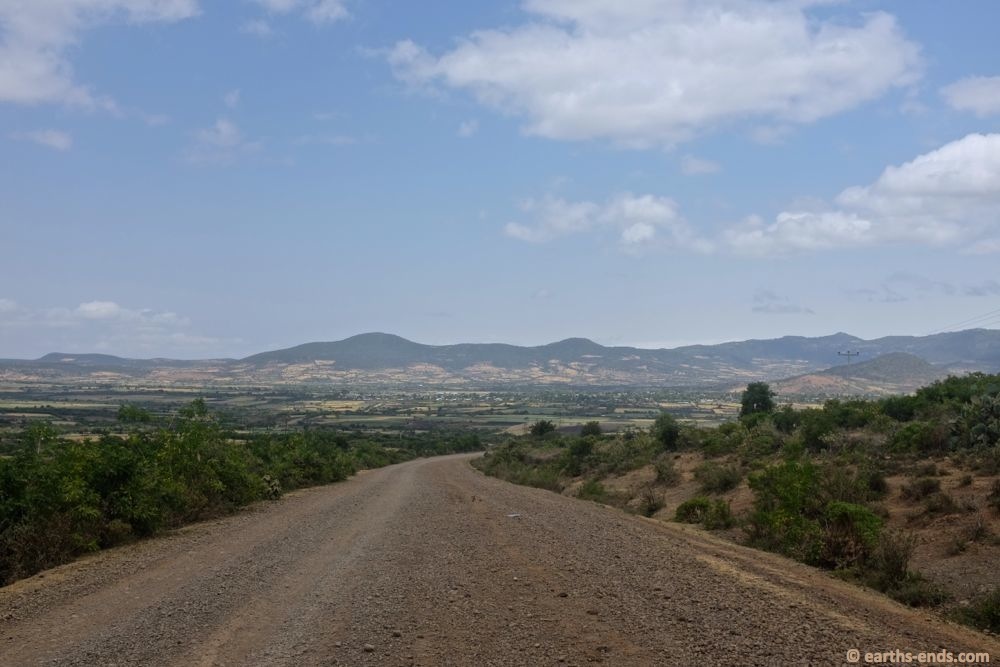
The view back down towards Goma on the road north to Ginir.
Lunch was an eye-opening affair. After finding a fruit bar with no fruit and then a kitfo restaurant (kitfo is an Ethiopian ‘specialty’, it is diced raw meat… we passed), we found a hotel where we could eat. We attracted heaps of kids who could not help themselves but grab at the bikes and our luggage and rudely beg for money (“You! You! Give me money!”), but thankfully the owner of the hotel took control of security and kept all the kids away with a few well aimed rocks and a menacing swing of a stick.

As we went north the road narrowed and narrowed to single lane. As usual, stock animals were everywhere.
That was the eye-opening bit. One thing you start to observe after a few days in Ethiopia is the common petty violence; a swing of a stick, a thrown stone, a cracked whip, a swipe around the ear or just a yelled word, it is everywhere. There is little to no respect for property or each other, so often kids would play with the dash and our luggage, or hang around a restaurant, or swing on a fence or door or do anything really, and no-one ‘asks’ them to stop. It is a stick or a rock that is used to communicate. If a person is unwanted, they are not asked to leave, they are threatened first and then chased/pushed/hit with a stone or stick or hand. We saw this on many occasions. While its only petty stuff and no one seems to get genuinely hurt or upset, the physical threat in itself is harsh and very different to the African cultures we have experienced to date.
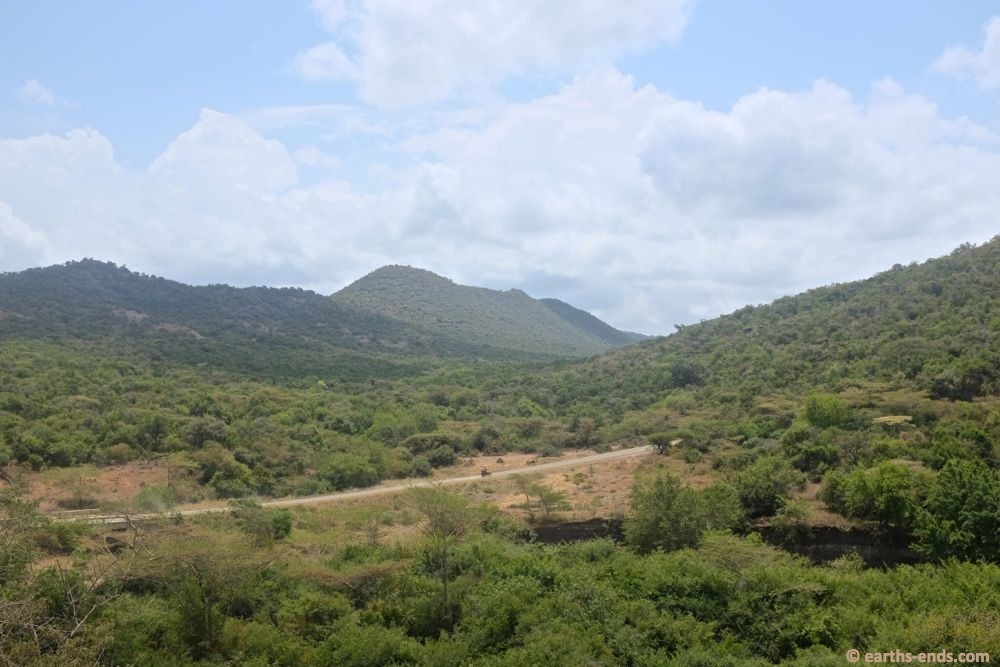
And more and more nice riding.
Lunch was tibs and injera and a few cold beers. That was a very pleasant surprise about Ethiopia, the local beer is decent and cheap. The owners of the hotel then gave us a few cups of local coffee, which had a slight salty and buttery taste, and some bbq’ed maize to snack on which was very thoughtful. And a very rare thing indeed in Ethiopia to receive anything for free. As we were leaving we were approached by a guy who welcomed us to the village in wonderful English, “please give me the opportunity to be the first to welcome you to this small rural town”.
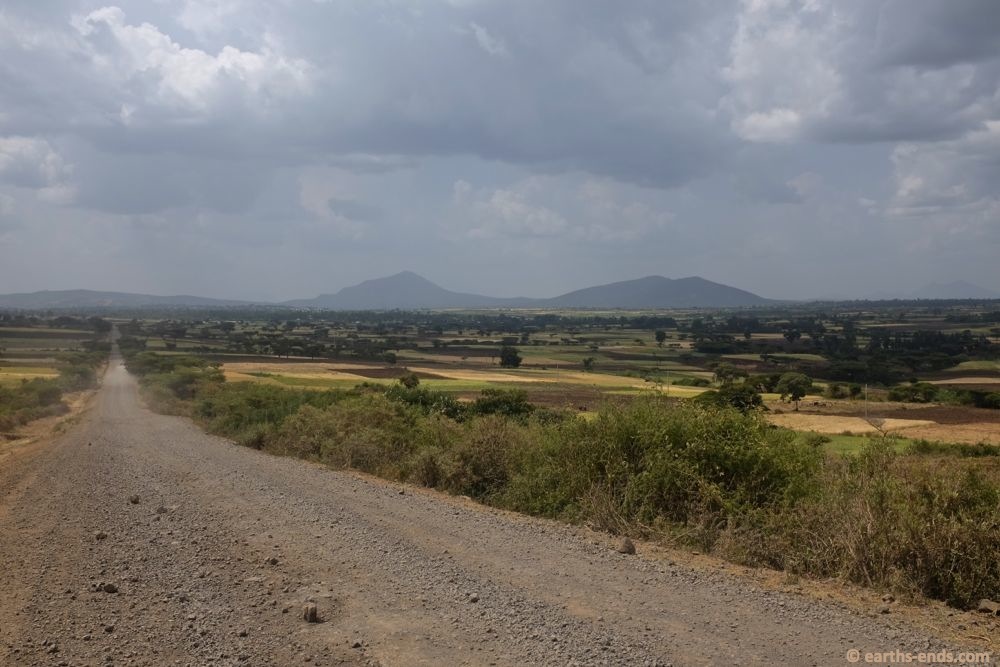
The road west of Ginir on the hunt for our turnoff north.
He told us that he was a medical doctor and also a teacher and learnt English from living with American Peace Corps in the late 1960s. He explained that everyone was very happy to see us as this place never receives foreign tourists and that we were probably the first white people the excited kids had ever seen. This was later reinforced when we pulled up just out of town so I could put on my jacket. A guy jumped straight out of the field to talk to us. He was so damn happy and spoke English quite well. He warmly welcomed us and excitedly asked a few of the usual questions (where you from? where you going? how fast does the bike go? ect). It was a nice moment.

Yet more views and gravel riding as we got closer to Sheik Hussien.
So we made only about 215km for the day and rolled into the tiny town of Sheik Hussein in the late afternoon. We were hoping for a cheap room and a cold coke but Sheik Hussein is so far off the beaten track there was nothing, literally nothing for us to buy. There was no little guesthouse. There was no coke, let alone a cold one. And certainly no beer. We couldn’t even get a tea, and little tea stalls in Ethiopia are everywhere!

Inside the abandoned tourist information complex at Sheik Hussein. As per normal, we drew a healthy crowd of onlookers.
Sadly, even this far from civilisation/this close to the arsehole of the earth (depending on your optimistic/pessimistic slant), chat had arrived. ‘Chat’ is a leafy plant that looks a bit like tea, is native to Ethiopia and an addictive narcotic when chewed. Which it is in huge proportions – chat is the largest agricultural product in Ethiopia and is exported widely (both legally and illegally). We had seen this stuff all over, and had been warned of the effect it has on people both short and long term.

The Shrine to Sheik Hussein in the morning light.
But while we had seen quite a few people chewing this stuff and staring off into space with a bemused look on their face, Sheik Hussein was our first experience with a long time hardcore abuser. Someone who has fried their brain to the point they are merely a standing, staring, dribbling and ranting shell of a person. We came to call them “chat zombies” i.e. the living dead who feast on chat, rather than the more conventional zombie diet of brains. While they appear similar, the green leafy dribble of the ‘Ethiopian Chat Zombie’ is a giveaway identifier. Personally, I tend to think the ‘Common Hollywood Brain Eating Zombie’ might be less scary.
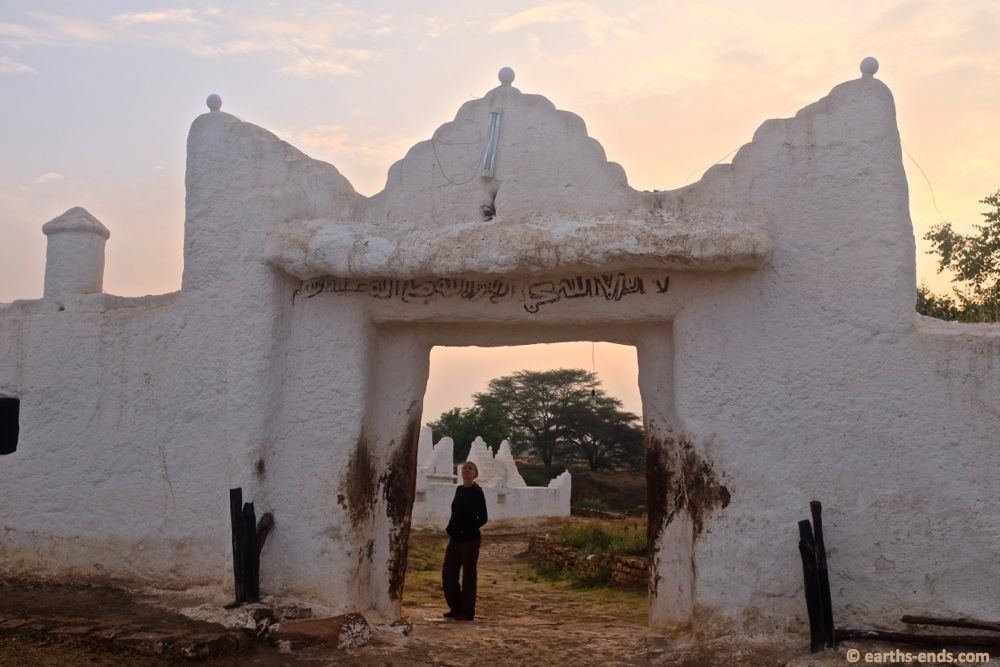
See, we do get up early in the morning. On occasion. Ok, very rare occasion.
We stopped to ask someone where we could stay and I get a tap on my arm and turn around to see this starving bony fella in nothing but some torn, stained rags which may have been shorts at some stage, with green spittle dribbling down his hairy chin from a near toothless mouth, and crazy crazy eyes. Those crazy wide non-blinking eyes that you know are open and looking but aren’t seeing anything. This guy is yanking on my shirt and jabbering away, but it wasn’t a language, just grunts and slurps through his leafy green spit, and those crazy fucking eyes. Tan turned around and yelped – this guy was a fright.
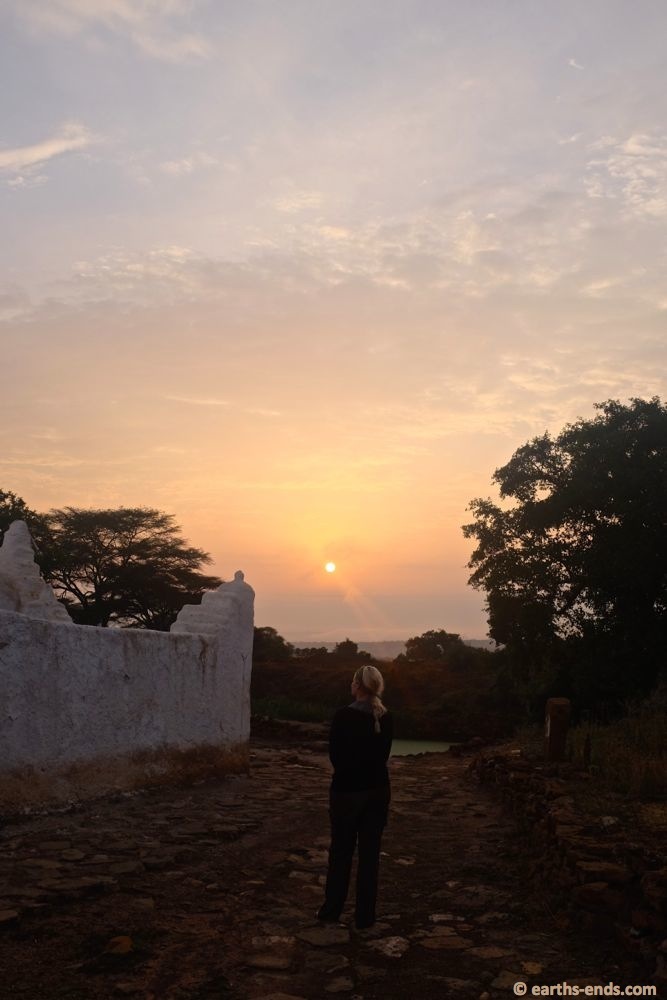
Our soft western feet suffered.
Thankfully Tanya was talking to someone far more useful than the horrid creature dribbling on my left arm, and led us down the hill with a huge throng in tow. Luckily basic motor control wasn’t one of the chat zombie’s strong points and he couldn’t keep up. We were led to a fenced compound with what looked like an abandoned building inside. Looks weren’t deceiving in this case. We found someone who spoke English and the only accommodation in town was the old and unused tourist information building in front of us.

On the inside. There were plenty of inscriptions in the mud.
The English speaker grabbed a random piece of paper, got to writing and quickly presented it to me. It was an itemised invoice including camping, security guard, tour guide and entrance to the shrine, which added up to nearly USD36. I couldn’t help but laugh. Camping in an old building with smashed windows and full of dust and debris was apparently going to cost nearly USD8 for the both of us, compared to the 10 we paid the night before for a room with passably comfortable double bed, hot shower and functioning toilet with seat. The answer was “ahhh no”.
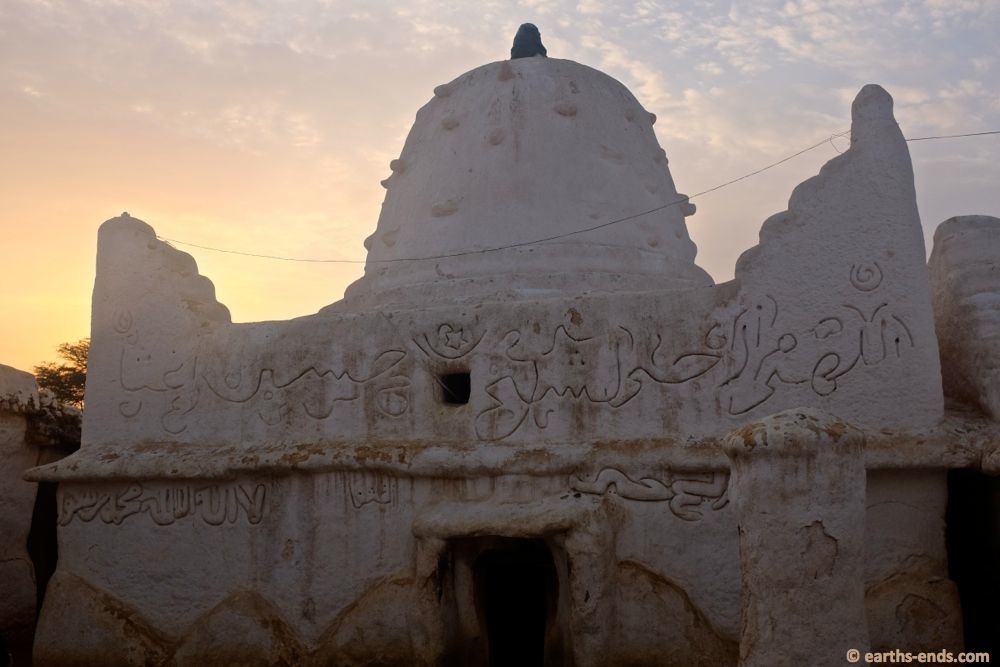
The tomb
We settled on USD18, still utterly ludicrous for Ethiopia, but a bit closer to reality and something we were more happy to pay. We put down our cots and entered our details in the tourist register. We were about the 50th and 51st people to visit that year, and being the end of July and the new year on the Ethipoian Calendar is in the middle of September (generally the 11th), that is a bit over 50 people for the whole year. That averages out to a bit less than 1 visitor every 6 days. You can now see why the tourist information building was abandoned.
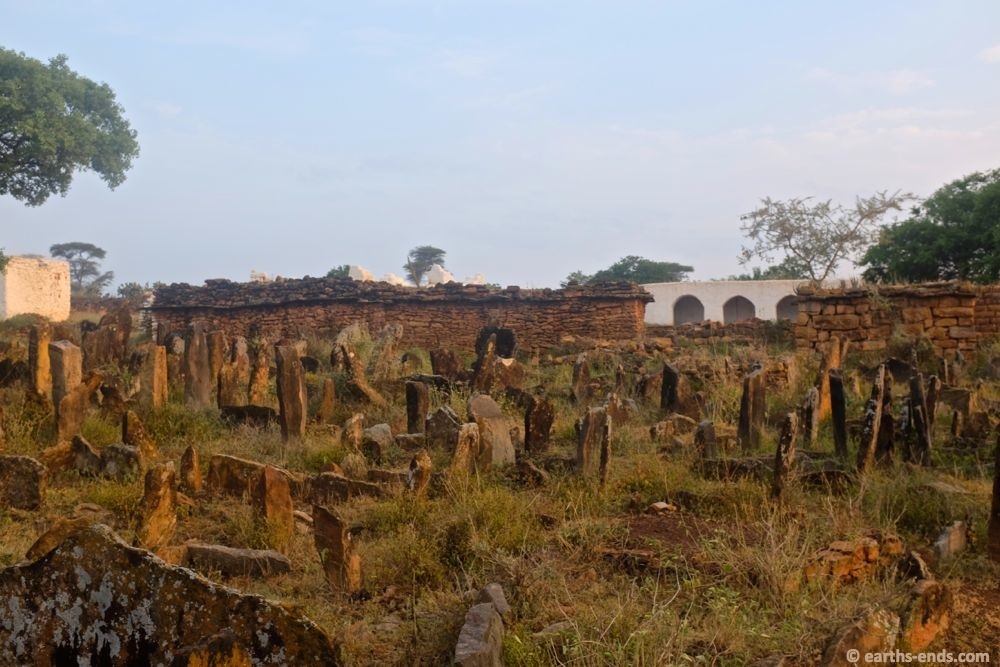
Graveyard out the back
Which is a shame, because the town of Sheik Hussein has a very unique tourist attraction in the mosque and shrine to Sheik Hussein, a muslim pilgrim who came through here in the 13th century and converted the populace to Islam. They might have just jumped the gun a little bit on building the tourist information building though. The town is still in the middle of nowhere, quite difficult to access and completely unserviced after all. No power. No water. No beer…
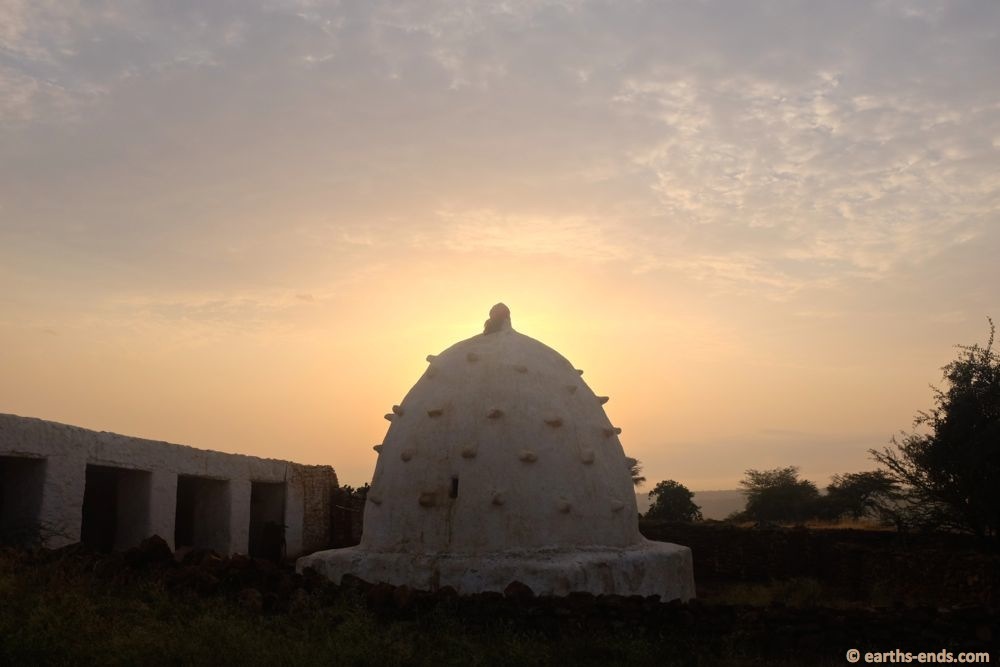
Another tomb
That night we had our first issues from the food. We had been warned of the predilection Ethiopian food has for upsetting ones stomach, but we had managed to avoid it to date. Until I woke up in the middle of the night, about 12 hours after eating lunch, and in a quite a nervous state. There was long drop toilet about 50m away in the corner of the compound and it was touch and go whether I would make it. Bad things happened in there. Bad bad things. I’m sure the next lot of tourists to come through Sheik Hussein will get charged much more than what we did to camp in the old tourist information building. Sorry about that.

View over the mosque. When the sun went down in the evening the town went completely dark. And then the mullah sang his nighttime call to prayer, and it echoed out over town. It was quite beautiful, especially compared to the usual call to prayer from mosques broadcast from a crap recording through a crap speaker at a hundred squillion decibel. That’s one benefit of having no electricity.
We were up early the following day to look around the mosque and shrine of Sheik Hussein. It was a very quiet and restful place, and beautiful in the early morning light. We were back at the bikes and packed and gone by 8. We had already attracted a huge crowd so skipped breakfast until we were about 10 minutes down the road where we found a quiet spot and had some crackers.

Inside the tourist information building. Coke hadn’t made it to Sheik Hussein yet but management bullshit somehow had. In the quest to provide good service, there was written up on the wall a mission statement, vision and values in addition to the 8 principles of good governance shown here. Now all they are missing is some tourists.
The riding that day was amazing. We climbed in and out of a number of beautiful sandstone canyons and saw basically no-one, which is near on impossible in any other part of Ethiopia. The 80-100km north of Sheik Hussein is probably one of the very few places in Ethiopia where you could comfortably wild camp with little risk of being found.
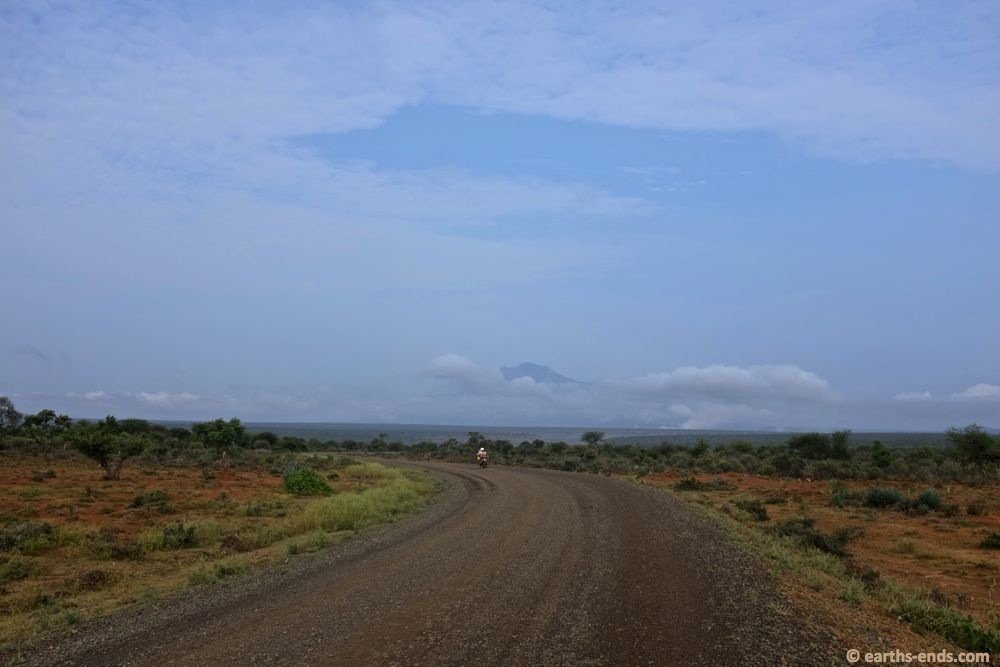
The start of the descent down into the canyons.
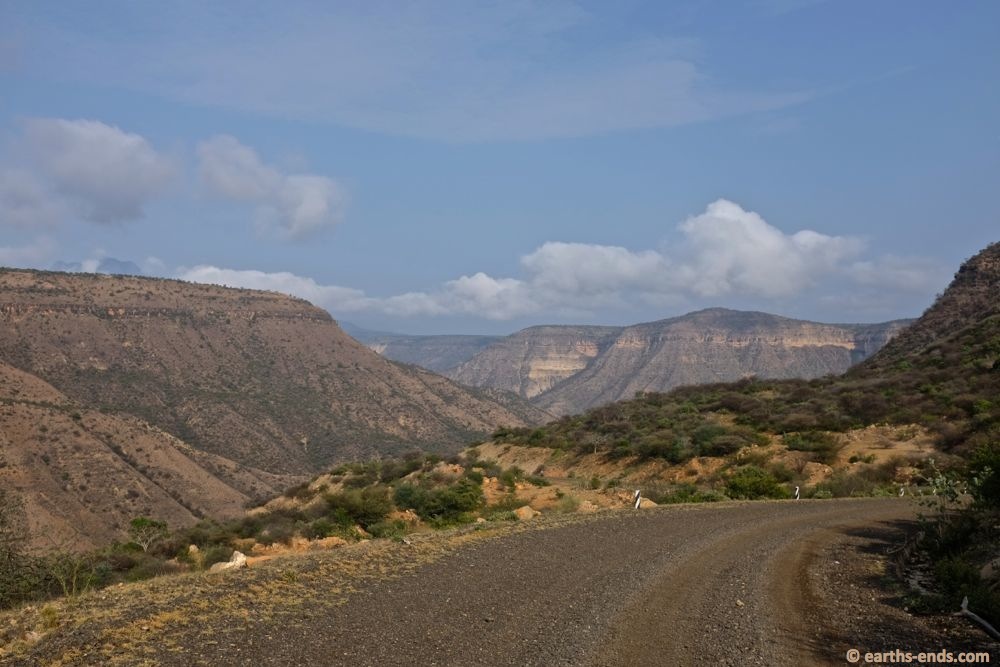
First proper views. We weren’t expecting this…
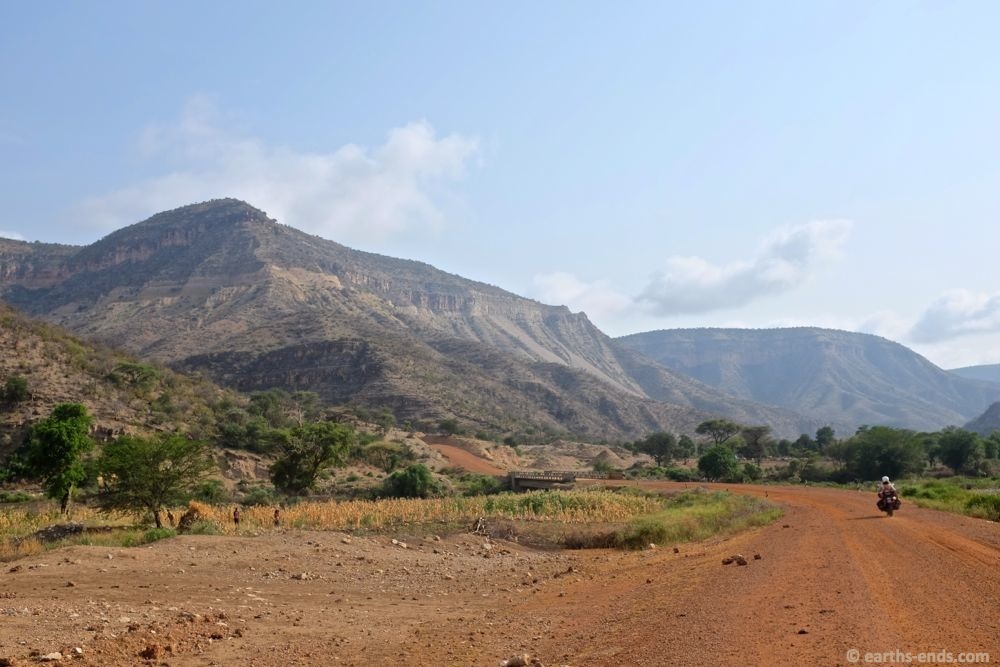
Down the bottom
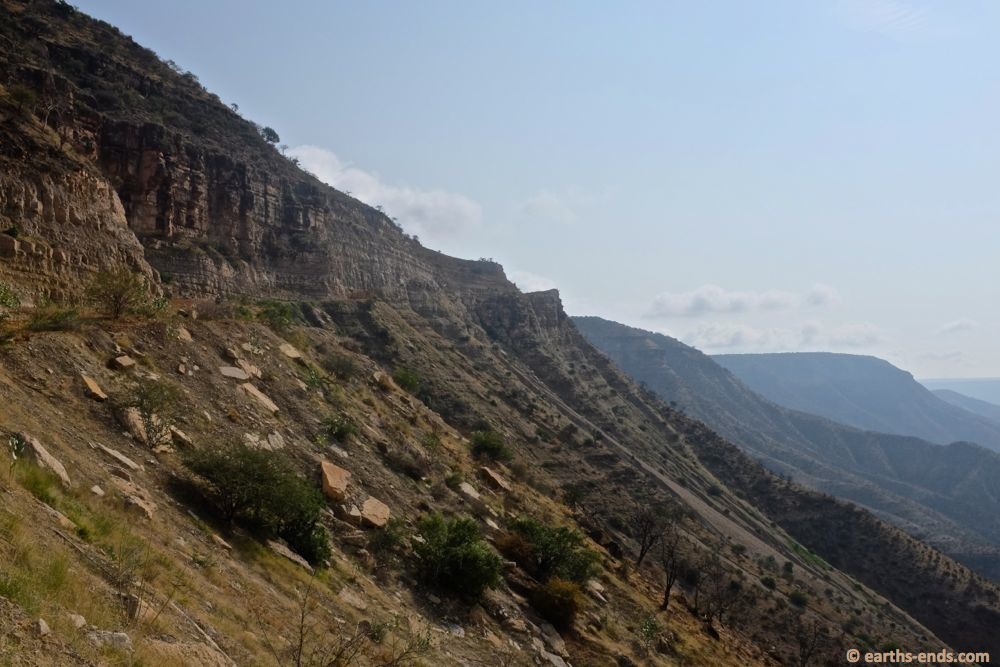
The climb out of the first canyon
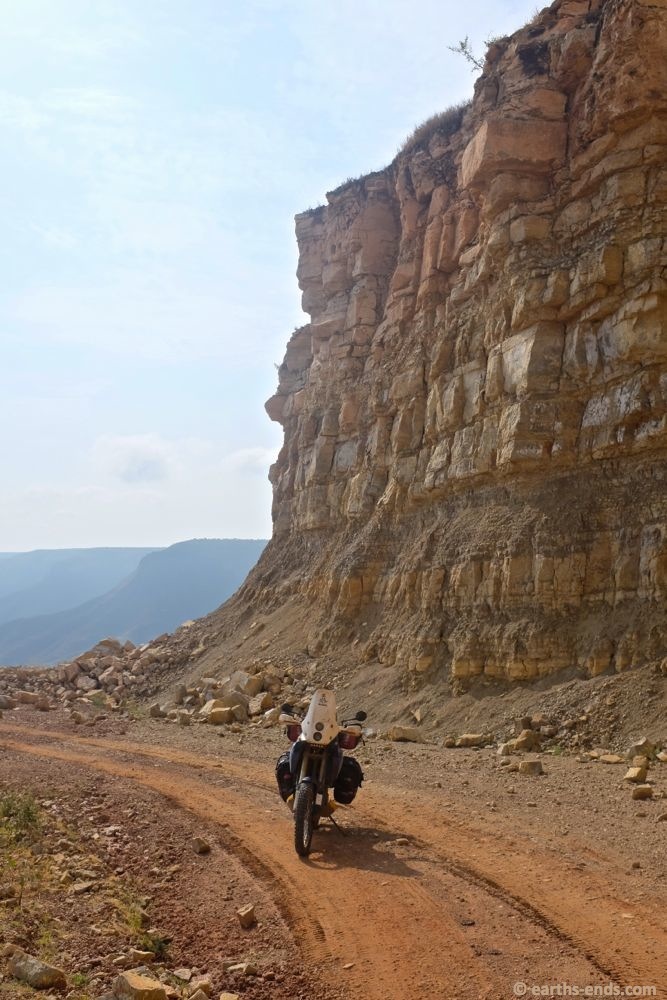
In one of the later canyons.
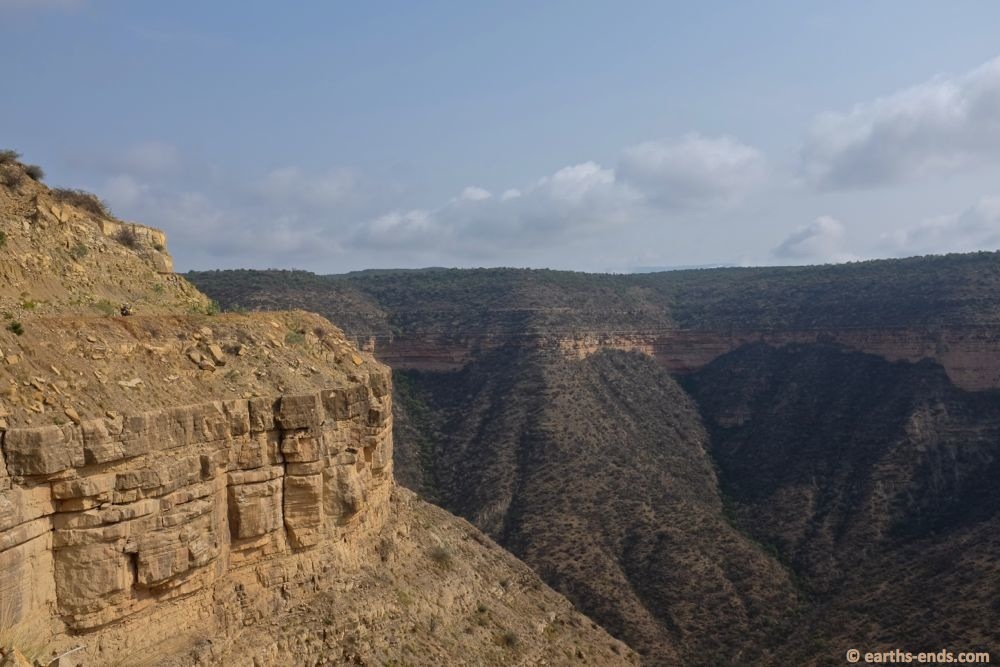
Views views views

Looking back at the last one. We crossed 5 I think.
Once we were out of the canyons though, the population just exploded. We had been looking for somewhere to rest and have a morning snack, but we were suddenly surrounded by endless villages and couldn’t stop without attracting a crowd of onlookers. So by early afternoon Tanya was getting quiet hangry.

Stopping for a snack. That’s chat growing on the hillside.
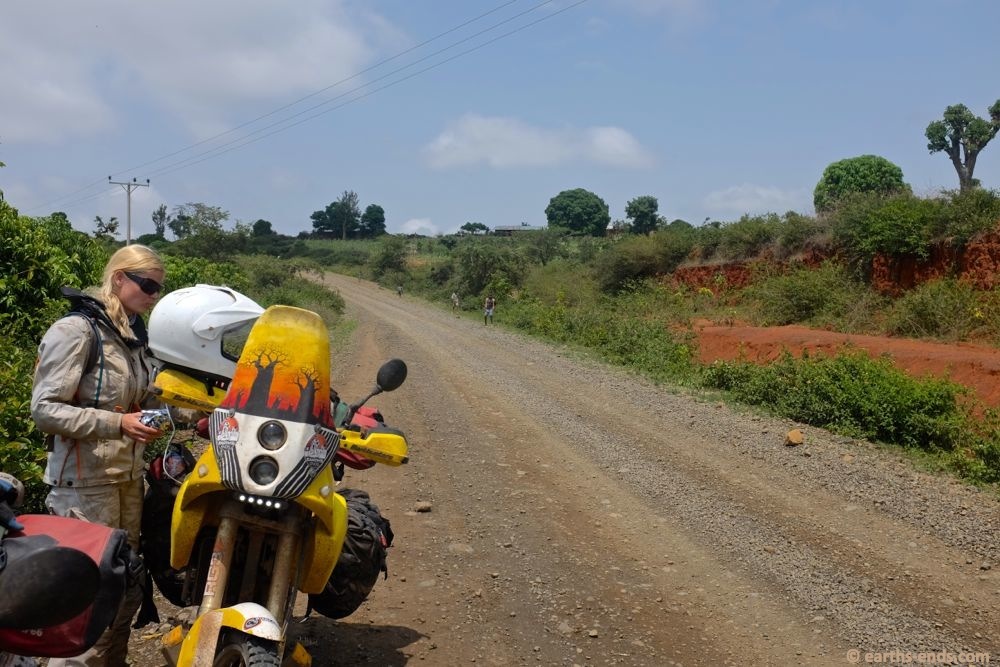
We’d had enough time to get our helmets off and had been spotted. Here come the kids running down the road…
We found a little roadside stall and got some food and tea for very little money, but were very quickly surrounded by people. Probably 100. While the atmosphere was really quite positive, the sheer amount of people clambering over each other to get a glance at us was intense. At first it was ok but with time we had more and more people getting closer and closer. We would have liked to rest a little longer but we had to go.

Lunch stop. Some food, that’s shiro (chickpea sauce) on the right, beans in front and potato at the back, all on injera.
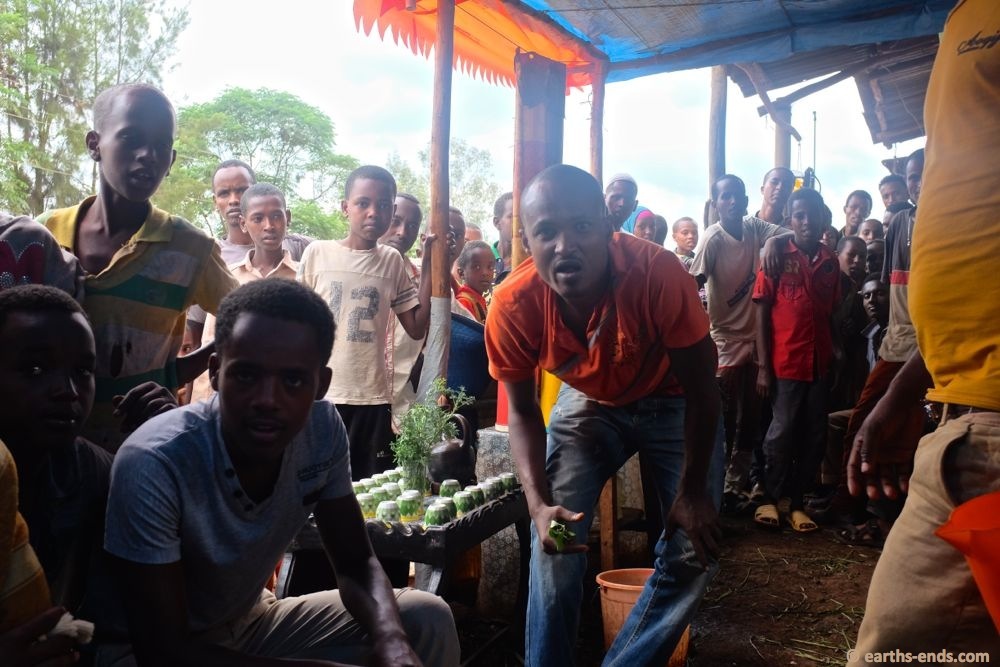
Trying to eat our lunch and this is what is staring at us… seriously. Everything is a spectacle in Ethiopia.

It was an intense, yet reasonably fun atmosphere. Everyone was so freakin excited to see faranji (Amharic for white man).

One guy wanted a photo, so Tanya gets out the camera, and then I had 4 guys jump all over me. We nearly all fell over, and everyone laughs.
We didn’t have gps maps or tracks so we were just following our nose and the compass north, which was pretty easy with so few road options but it got harder as we got closer to the tar and the amount of people just skyrocketed. We hit the main road and turned right towards Harar, but the tar gave little respite. While the riding was easier, the amount of animals and pedestrians meant we were travelling at much the same speed as on the gravel. Goats and donkeys were everywhere, and people would see the bikes and would run out onto the road shouting and pointing and trying to wave us down. Occasionally they would even try and grab at the bikes as we rode by.
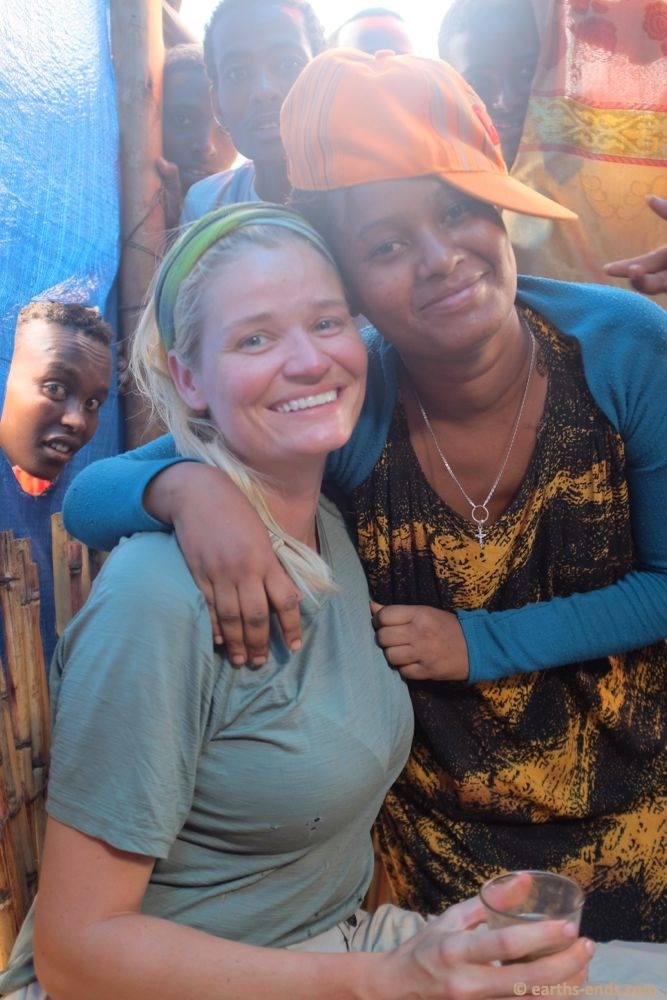
This chick wanted a photo with Tanya, but I think just to get a photo of her hat. The kid sticking his head through the wall was hilarious. There were a few holes and kids were always trying to steal a glance at us, but they were easy prey for the owner of the restaurant to whack.
At one stage, I came around the corner to see a large group of potholes, so swerved towards the left hand side of my lane (the centre of the road, Ethiopians drive on the right) to avoid the worst of them and got up on the pegs to absorb the rest. A small boy saw me and ran out onto the road screaming and pointing, causing me to swerve further left and into the oncoming lane. Thankfully there was no traffic coming (there are few cars in Ethiopia), however the enthusiastic running and screaming of the boy had excited his dog, who also ran out onto the road. And straight under my front wheel at about 60kph.
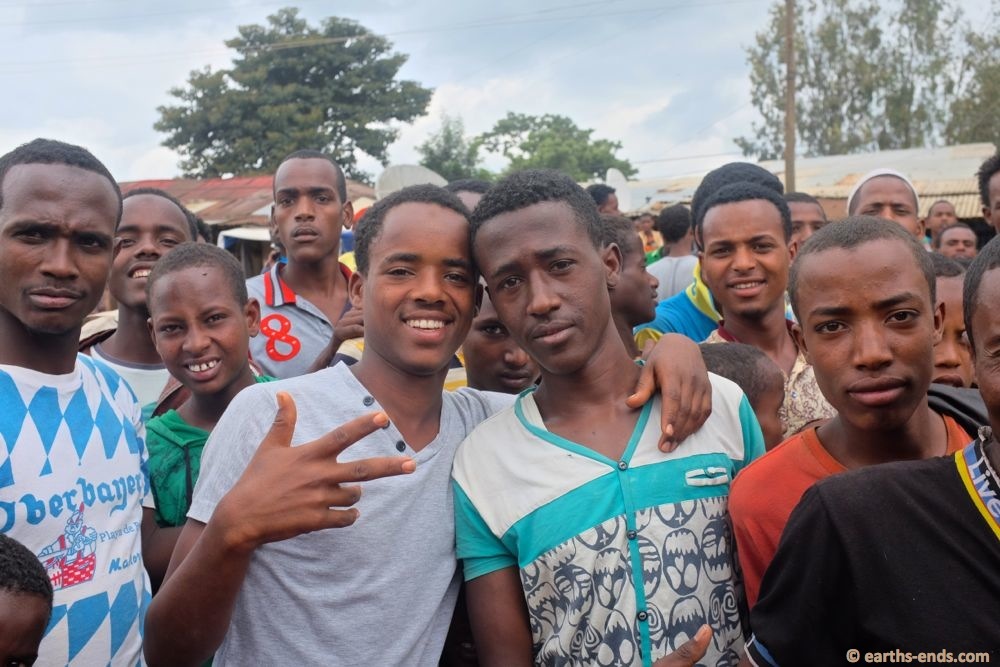
Getting ready to go. There were a few people who could speak some English. One guy kept repeating over and over “We appreciate you!”
Luckily the dog was a pretty common African mangy thing and wasn’t large, and as I was standing I could absorb the impact. The bars got jolted hard to the left and the front wheel bounced high as I hit; the rear wheel bucked up and left also, but I rode it out with heart pounding. If I was sitting I don’t know if I could have managed it. Poor Tan was 40m behind me and saw it all; the dog went under both wheels and was instantly dead. By the time she had ridden past, an onlooker had realised what had happened but we were gone. And we weren’t stopping. Sounds harsh but we had been warned by long term Ethiopian residents that you do not stop when you hit an animal unless you have to. The danger to you from the inevitable mob that forms is real.

Tan was popular
We later had a conversation with an expat resident in Addis Ababa about the cost of roadkill. While the locals will try and extort a foreigner for any amount of money they can get, the going rate for killing a goat or sheep is about USD50, a donkey is USD150, a cow is about USD350, horses are more again but dogs are free. He confirmed that the risk of mob violence if you kill an animal is real and suggested that tourists should just drive/ride on if they hit one. Most locals do the same if they can. He said if you hit a person, you definitely do not stop; you drive on to the next police station and declare it.

Just one part of the crowd that formed as we left lunch and headed to Harar. There were people everywhere.
We managed to find a fuel station with petrol which was handy as we were getting quite low. It was 550km since we had fueled up in Robe, and we had only seen about 3 petrol stations since. And all with no petrol to sell. We arrived in Harar with the sun getting low and our backs aching. We had been riding for 10 and a half hours and had managed 440kms. That is a real big day for Ethiopia.
 Earths-Ends
Earths-Ends
Hi Mick and Tan,
we have really enjoyed following your trip, giving us an amazing insight into real world Africa.
here’s wishing you a happy new year and look forward to the next episode.
mick@nova racing